(Warning: images of hog offal to follow. Look away if you can’t handle it!)
Head cheese. Liver pâté. Grilled heart.
Cooking and eating a whole hog from snout to tail involves ahelluvalot more than just pork chops, ribs, and bacon.
It requires getting over the need to have all your meat disguised in boneless, shrink-wrapped packages and get up close and personal with the “nasty bits” that we in the States usually shun.
Our aversion to these cuts is unfortunate, as they are some of the most nutritious and flavorful parts of the beast.
While cultures have traditionally prized these parts of the animal, they are now typically avoided due to the “ew” factor of chowing down on something you last confronted in anatomy class.
But if you’re going the whole hog, you better be ready to cowboy up and cook these pieces up into tasty meals that will have you coming back for more.
The Head
This is the part that really freaks people out.
Unlike frying up a boneless pork chop, there’s no way of avoiding the knowledge that your food comes from a once-living animal when you are faced with a pig’s head.
Since it’s a waste to let this part of the hog (which is full of meat) go to waste, thrifty cooks from time immemorial have made the most of this large cut of pork.
The head can be roasted, the jowls can be dry-cured and made into guanciale, but the most classic of dishes made from the pig’s noggin is headcheese.
Here, the pig’s head is slowly simmered in a pot of hot water until it can be removed and all the meat picked away and shredded. The cooking liquid is then reduced down into a luscious, gelatin-filled stock and poured over the shredded pork and then cooled to set into a delicious terrine.
I’ll be making a basic headcheese from the hog head, and will fry up the cartilaginous ears as toppings for salads.
The Liver
When carnivores in the wild eat their prey, the first thing they consume is almost always the liver.
This organ is tender and filled with nutrients. Up until the recent past, liver was still a prized hunk of meat in most cultures.
Although the liver can be sliced thin and quickly fried, I’d like to take it to the next level and make a pâté out of it.
A pâté is a dish of ground up liver and spices that is used as a spread for crackers or bread.
The Heart
Things get a little more confusing with the heart.
While most resources I’ve found recommend grilling or frying thin slices of the heart, I’ve heard plenty of people talking about braising it instead.
This makes sense to me. Since the heart is such a hard-working muscle, I’d imagine it is tough and needs a long, slow cook, much like a butt or ham.
Nevertheless, I’m going to bow to peer pressure here and fry (or grill) the heart.
The Lungs
Here’s where I really get confused.
Pork lungs seem to get no love from anyone, but what research I’ve found suggests a slow and low cook to optimize the flavor and texture of this underrated organ.
I’m planning on doing a basic braise for the lungs, but interested to hear if anyone else has any suggestions. (Leave ’em as comments below!)
The Other Pieces
There’s plenty more to a hog’s innards than liver, heart, and lungs, but that’s where my personal stash ends.
I was told that it is difficult to get the butcher to set aside these nasty bits, but I’m grateful for what I got.
Other innards you could get from a hog include:
- Intestines–Which can be cleaned and stuffed with ground meat to make sausage. I think I’m going to track some down for this purpose.
- Kidneys–As far as I can tell, the kidneys are another tender organ meat that benefit from a quick sear. Too bad I didn’t get ’em, but oh wells.
- Blood–Don’t freak. Blood sausage is a traditional method of using the iron-rich liquid that pump’s through a hog’s veins.
There’s more. Bladder, spleen, tripe, and… er… Rocky Mountain oysters. (My hog was a female, so I didn’t have the chance to try this “delicacy.”)
Now that I have covered all the major sections of a hog, from the front limb to the rear limb and the midsection in-between, and now all the miscellaneous bits, I’d like to move on to the basic methods of preserving a whole hog so that I can consume it all before it goes bad (and maximize flavor in the process!).
In the next article in this series, I’ll take a look at the only rock that humans eat, and how it plays an integral role in lending flavor and enhancing the “cookability” of pork.
Until next time!
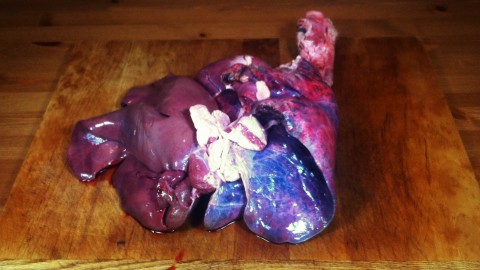
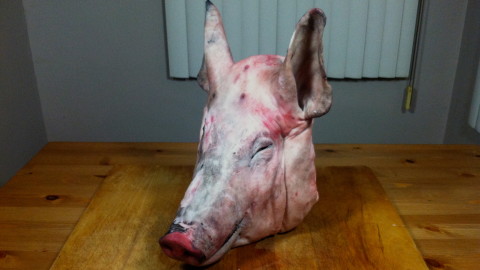
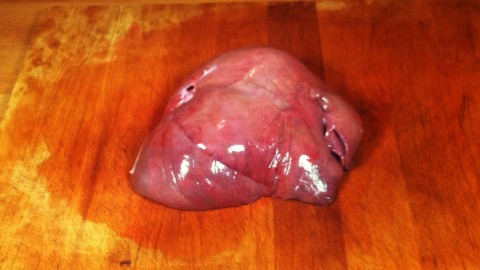
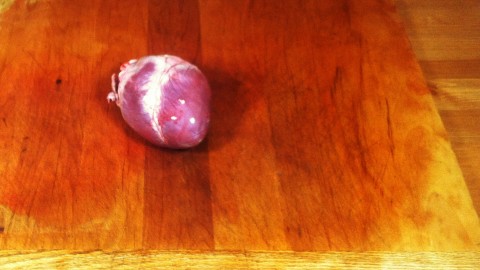
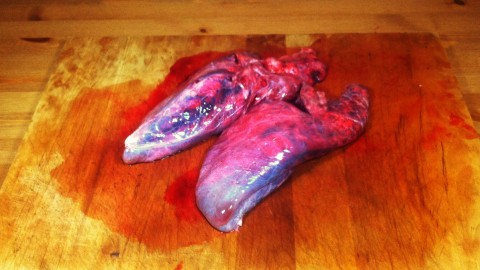
 I'm a science geek, food lover, and wannabe surfer.
I'm a science geek, food lover, and wannabe surfer.
Comments on this entry are closed.